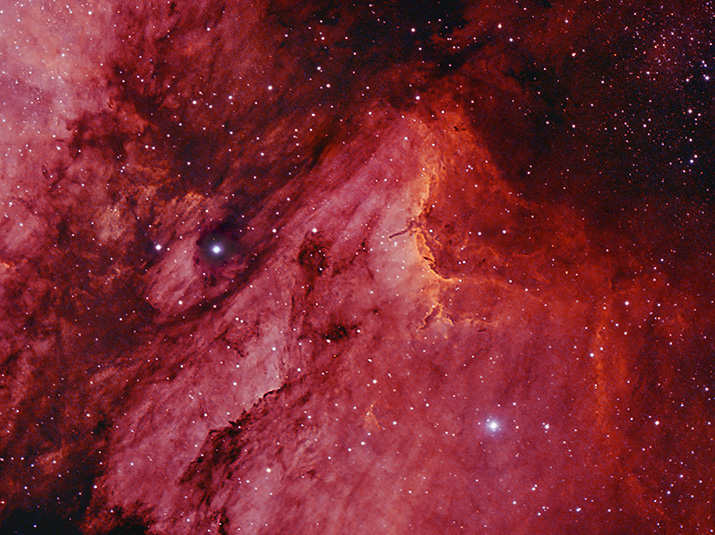
|
Date: Aug. 19-21, 2016 - Location: Davis Mountains, TX Click on the image to view at higher resolution. |

|
IC5070, commonly known as The Pelican Nebula, is a HII region of ionized hydrogen gas glowing with the characteristic red of typical emission nebulae. The nebula gets it name from its resemblance to the head of a pelican. The nebula is but a small part of a much larger cloud of gas and dust that comprise the North American Nebula and surrounding area. The bright area along the neck of the pelican is designated as IC 5067. This area is an active stellar nursery where new stars are being born in the massive columns of gas and dust that are evident in the image above. The Pelican lies in the constellation of Cygnus the Swan and is approximately 1,800 to 2,000 light years distant. Dr. Robert Gendler published a very informative article describing this very interesting celestial vista. It may be viewed here The above image was assembled from exposures made through Hydrogen Alpha (deep red) and Oxygen III (blue-green or teal) filters. These exposures were combined with Hydrogen Alpha mapped to the red channel, Oxygen III mapped to the blue channel, and a combination of the Hydrogen Alpha and OIII mapped to the green channel. 1http://en.wikipedia.org/wiki/Pelican_Nebula
|